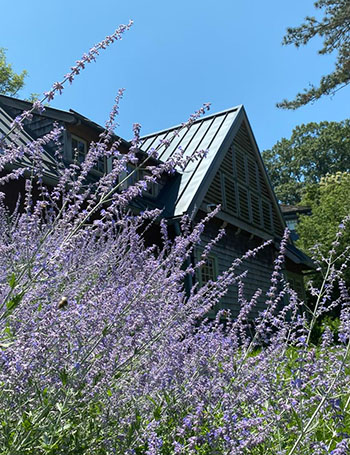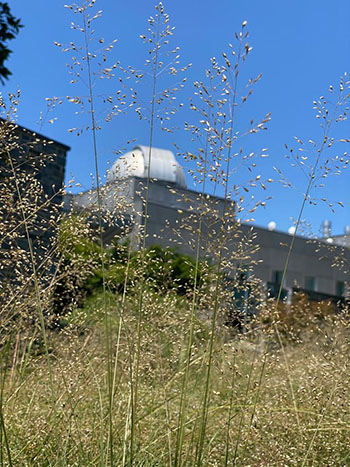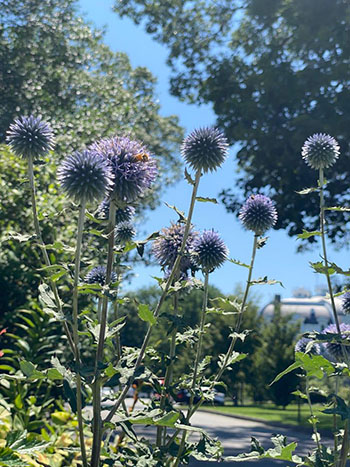
Plants of the Week: July 11
Guest Author: Summer Intern Johanny Bonilla

Salvia yangii or Russian sage is a sub-shrub known for its tall silvery-gray stems and aromatic purple flowers. Previously known as Perovskia atriplicifolia, Russian sage is neither from Russia nor a sage. The plant is native to Central Asia, but was named after Russian diplomat B.A. Perovski. Russian sage reaches up to 5 feet in height, yet it is rarely staked due to its structural base. Placing the plant in a sunny location creates a strong plant that will not flop. Due to its drought tolerance, prolonged aromatic blooms, and wispy nature, Russian sage is ideal for sensory gardens, borders, patios, and pollinator gardens. Come and smell our blooming Salvia yangii located in front of the Wister Center. photo credit: J. Bonilla

Prairie dropseed, Sporobolus heterolepis, is a perennial warm season grass native to the prairies of Central North America. The grass is considered by many as the most handsome of the prairie grasses due to its elegant and unusual florets that drop seeds to the ground when matured. These seeds were once used by Native Americans to make flour, and birds such as juncos and sparrows consume them. The grass is both deer and drought tolerant and it is also used to control erosion because of its deep roots. For optimal growth, burn or cut the grass to the ground yearly in early spring. Locate the grass away from buildings and structures if using the burning method. Prairie dropseed is a great complimentary grass in mixed borders, meadows, and naturalistic gardens. Come check out our Sporobolus heterolepis across the Science Center. photo credit: J. Bonilla

Echinops ritro ‘Veitch’s Blue’ is a durable perennial that has stunning golf ball sized dark blue blooms. The genus comes from the Greek word echinos which means hedgehog and ops meaning appearance referring to its hedgehog-like flowers. Echinops or globe thistle serves a crucial role within the garden as the source of nectar for the painted lady butterfly. This globe thistle is slightly smaller than other types, reaching heights of up to 42 inches, however, it displays more abundant flowering. This ornamental perennial is drought /deer resistant, and provides textural interest even past its bloom. Ideal for perennial borders, cut flowers, and pollinator gardens. Come and experience our Echinops ritro ‘Veitch’s Blue’ located in our Scott Entrance Garden. photo credit: J. Bonilla





No Comments